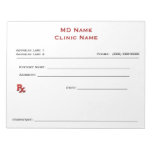- You can't know when it will happen for the first time -- but almost two-thirds of people with dementia wander off at some point.
- Once it happens, it's almost certain to happen again.
- Up to half of wanderers missing for 24 hours are not found alive.
That's why the launch of a new service to track and locate people with dementia who have wandered off was big news. And good news -- except for the cautionary notes I'll get to in a moment.
Lojack SafetyNet starts with a radio-tracking device inside a wristband or ankle band ("beacon"). Local law enforcement agencies have a receiver, which can pick up the signal, even in dense woods or buildings. The "safety net" also includes a database of key information about the missing person and 24/7 emergency caregiver email/phone support.
If you've heard of Project Lifesaver, the program used by police and sheriff departments in 45 states (but not all communities), you know this system. Lojack has bought one of two companies that supplied equipment to 10-year-old Project Lifesaver International. (The other is CareTrak.) They're funding an expansion of the equipment and training needed to run the program in more communities. Lojack is noteworthy because they're so big and effective at finding what's lost; they already work with 1,900 police departments to recover stolen vehicles, their original expertise, and in 30 countries.
To find it, start with your local law-enforcement office. In some communities Project Lifesaver is free; more typically, it costs $99 to enroll and $30 per month thereafter.
Aside from the cost -- and each caregiver has to weigh the cost of peace of mind for himself or herself -- I do see two downsides to these systems. Luckily, you can do something about each.
First, the pesky one: How do you get the person to go along with wearing a band on their wrist or ankle?
- Try explaining it as a medical ID bracelet.
- Start with the ankle, where it's less likely to be seen (and more quickly forgotten)
- Make sure it's a comfortable fit, not too tight to chafe.
- If the bracelet is a bust, some companies (not usually affiliated with local police) use GPS tracking hidden inside watches. The Alzheimer's Association's Medic Alert + Safe Return program offers a jewelry-style pendant. (It's for ID purposes only; there's no tracking involved as Safe Return is a community search network.)
And now the critical one: Do they give a false sense of security?
The dark side of security devices is that they can raise the user's sense of safety – to the point where they let down their guard. (That's why children's safety experts aren't so hot about water wings. Kids who can't swim still need supervision in the water.) Enrolling in a rescue system still means you need to safeguard against wandering in the first place.
- Keep an eye on a person who's a wandering risk 24/7. Hire neighborhood teens or a professional elder companions, or look into local respite programs, if you need extra coverage.
- Learn simple things you can do at home to prevent wandering.
- Don't think it can't happen to you.















No comments:
Post a Comment